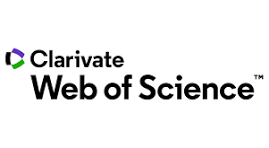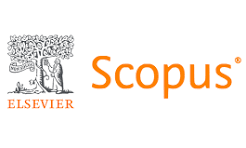ANTI-INFLAMMATORY AND ANTI-CANDIDAL ACTIVITY OF CORIANDRUM SATIVUM SEED EXTRACTS AGAINST CANDIDA ALBICANS AND CANDIDA TROPICALIS
Abstract
Background: Candidiasis in not uncommon among hospitalized patients. The fungal virulence and antifungal drug resistance make the host-parasite interactions complicated. The threat of azole drug resistance along with scarcity of antifungal therapies prompted the necessity of novel drug development from various natural sources. The objective of this study was to evaluate the anticandidal activity of Coriandrum sativum seed extracts against Candida albicans and Candida tropilcalis.
Materials & Methods: This study was conducted at Department of Basic Medical Sciences, College of Medicine, Prince Sattam Bin Abdulaziz University, Al-Kharj, Saudi Arabia from July 20, 2021 to September 26, 2021. The study analyzed anti-inflammatory assays via inhibition of albumin denaturation and hemolysis inhibition and anticandidal activity of the extract against Candida albicans and Candida tropilcalis by well diffusion method. The minimum inhibitory concentration (MIC) of the extract was also determined against both the fungi.
Results: Anti-inflammatory activity of Coriandrum sativum methanolic seed extracts were evaluated at five different concentrations from 100 µg to 1000 µg. The highest concentration showed 55.31±0.77% of inhibition of albumin denaturation, whereas the aspirin, the standard used, showed 80.33±0.32%. Coriandrum sativum seed extracts at 250 mg/ml, 500 mg/ml and 1000 mg/ml produced zones of growth inhibition with diameters 12.66±0.57, 17.66±0.57 and 24.33±1 mm against Candida albicans, and 10.33±0.57, 16.66±0.57 and 21.66±0.57 mm against Candida tropicalis. The MICs of the Coriandrum sativum seed extracts against Candida albicans was 1.95 mg and Candida tropicalis was 3.9 mg.
Conclusion: Phytochemical compounds in methanolic seed extracts of Coriandrum sativum showed significant anticandidal activity against Candida albicans and Candida tropicalis with highest zone of inhibition at 1000 µg extract concentration. The lower MICs of Coriandrum sativum seed extracts against Candida albicans and Candida tropicalis were also significant. Considering all these findings along with the antioxidant activities, it could be suggested that Coriandrum sativum seed extracts can further be investigated for development of novel anticandidal drugs.
Keywords
Full Text:
PDFReferences
Bhattacharya S, Sae-Tia S, Fries BC. Candidiasis and mechanisms of antifungal resistance. Antibiotics 2020;9(6):312. https://doi.org/10.3390/antibiotics9060312
Willems HME, Ahmed SS, Liu J, Xu Z, Peters BM. Vulvovaginal candidiasis: a current understanding and burning questions. J Fungi (Basel) 2020 Feb 25;6(1):27. https://doi.org/10.3390/jof6010027
Vila T, Sultan AS, Montelongo-Jauregui D, Jabra-Rizk MA. Oral candidiasis: a disease of opportunity. J Fungi (Basel) 2020 Jan 16;6(1): 15. https://doi.org/10.3390/jof6010015
Denning DW, Kneale M, Sobel JD, Rautemaa-Richardson. Global burden of recurrent vulvovaginal candidiasis: a systematic review. Lancet Inf Dis 2018 Nov; 18(11):339-47. https://doi.org/10.1016/S1473-3099(18)30103-8
Gonçalves B, Ferreira C, Alves CT, Henriques, Joana Azeredo, Silva. Vulvovaginal candidiasis: epidemiology, microbiology and risk factors. Crit Rev Microbiol 2016; 42:905-27. https://doi.org/10.3109/1040841X.2015.1091805
Rodríguez-Cerdeira C, Gregorio MC, Molares-Vila A. Biofilms and vulvovaginal candidiasis. Colloids Surf B Biointerfaces 2019; 174:110-25. https://doi.org/10.1016/j.colsurfb.2018.11.011
Chakrabarti A, Sood P, Rudramurthy SM, Chen S, Kaur H, Capoor M, et al. Incidence, characteristics and outcome of ICU-acquired candidemia in India. Intensive Care Med 2015 Feb: 41(2):285-95. https://doi.org/10.1007/s00134-014-3603-2
Qin F, Wang Q, Zhang C, Fang C, Zhang L, Chen H, et al. Efficacy of antifungal drugs in the treatment of vulvovaginal candidiasis: a bayesian network meta-analysis. Infect Drug Resist 2018;11:1893-1901. https://doi.org/10.2147/IDR.S175588
Collins LM, Moore R, Sobel JD. Prognosis and long-term outcome of women with idiopathic recurrent vulvovaginal candidiasis caused by Candida albicans. J Low Genit Tract Dis 2020;24:48-52. https://doi.org/10.1097/LGT.0000000000000496
Kajal A, Singh R. Coriandrum sativum improve neuronal function via inhibition of oxidative/nitrosative stress and TNF-α in diabetic neuropathic rats. J Ethnopharmacol 2020;4(3);112959. https://doi.org/10.1016/j.jep.2020.112959
Gundogdu E, Tanrıverdi E, Yildiz H. Antimicrobial Activity of Coriandrum sativum L. and its effect on microbiological properties of yoghurt. JAST 2020;22(5):1247-56.
Al-Marzoqi AH, Hameed IH, Idan SA. Analysis of bioactive chemical components of two medicinal plants (Coriandrum sativum and Melia azedarach) leaves using gas chromatography-mass spectrometry (GC-MS). Afr J Biotechnol 2015;14(40):2812-30. https://doi.org/10.5897/AJB2015.14956
Maroof A, Kumar A, Singh P. Effects of coriander (Coriandrum sativum L.) seed powder on growth performance of broiler chickens. J Krishi Vigyan 2016;5(1):57-9. https://doi.org/10.5958/2349-4433.2016.00034.9
Blostein F, Levin-Sparenberg E, Wagner J, Foxman B. Recurrent vulvovaginal candidiasis. Ann Epidemiol 2017;27:575-82. https://doi.org/10.1016/j.annepidem.2017.08.010
Messaoudi M, Begaa S. Dietary intake and content of some micronutrients and toxic elements in two Algerian spices (Coriandrum sativum L. and Cuminum cyminum L.). Biol Trace Elem Res 2019;188:508-13. https://doi.org/10.1007/s12011-018-1417-8
Begaa S, Messaoudi M. Thermal neutron activation analysis of some toxic and trace chemical element contents in Mentha pulegium L. Radiochim Acta 2018 Sep 1;106(9):769-74. https://doi.org/10.1515/ract-2018-2942
Rajeshwari, Ullagaddi, Bondada Andallu. Medicinal benefits of coriander (Coriandrum sativum L). Spatula DD 2011;80:51-8. https://doi.org/10.5455/spatula.20110106123153
Duarte A, Ferreira S, Silva F, Domingues FC. Synergistic activity of coriander oil and conventional antibiotics against Acinetobacter baumannii. Phytomedicine 2012;19: 236-8. https://doi.org/10.1016/j.phymed.2011.11.010
N. Ildız1, A Baldemir Kılıç, Y. Konca. Phytochemical Composition of Coriandrum sativum L. (Coriander) seeds and antibacterial effects on laying hens. J Anim Plant Sci 2018;28(6):1615-21.
Wei JN, Liu ZH, Zhao YP, Zhao LL, Xue TK, Lan QK. Phytochemical and bioactive profile of Coriandrum sativum L. Food Chemistry 2019;01:17. https://doi.org/10.1016/j.foodchem.2019.01.171
Tang EL, Rajarajeswaran J, Fung SY, Kanthimathi MS. Antioxidant activity of Coriandrum sativum and protection against DNA damage and cancer cell migration. BMC Complement Altern Med 2013 Dec;13(1):1-3. https://doi.org/10.1186/1472-6882-13-347
DOI: https://doi.org/10.46903/gjms/20.01.1090
Refbacks
- There are currently no refbacks.
Copyright (c) 2022. Muhammad Musthafa Poyil, Ayman Geddawy, Abubucker Peer Mohideen, Karkuvelraja Raja

This work is licensed under a Creative Commons Attribution-NonCommercial 4.0 International License.

Gomal Medical College, Daraban Road, Dera Ismail Khan, Pakistan
ISSN: 1819-7973, e-ISSN: 1997-2067
Website: https://www.gmcdikhan.edu.pk
Phone: +92-966-747373



